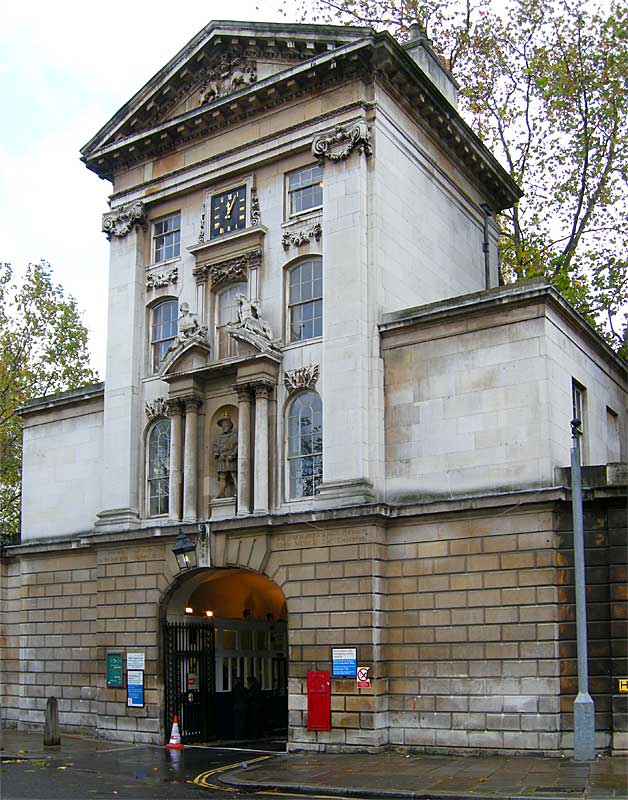Smithfield is in the City of London, and is known for its centuries-old meat market, and today the last surviving historical market in Central London. Smithfield has a bloody history of executions including major historical figures such as Scottish patriot William Wallace, and the leader of the Peasants Revolt Wat Tyler

Today, the Smithfield area is dominated by the imposing, covered market designed by Victorian architect Sir Horace Jones in the second half of the 19th century. Some of the original market buildings were abandoned for decades and faced a threat of demolition, but they were saved as the result of development plans aimed at preserving the historical identity of this area.
Directly opposite Smithfield Market is St Bartholomew’s Hospital

It is the oldest surviving hospital in England founded in 1123 and has an important current role as well as a long history and architecturally important buildings. The Henry VIII entrance to the hospital shown in the photograph is still the main public entrance; the statue of Henry VIII is the only public statue of him in London. On an adjoining wall, William Wallace is honoured with a plaque marking the site of his execution in 1305.
A short walk through some lovely city back streets and the Temple Bar you quickly come to St Pauls Cathedral
The Cathedral – was designed by Sir Christopher Wren and built between 1675 and 1710 after its predecessor was destroyed in the Great Fire of London.

Since the first service was held here in 1697, Wren’s masterpiece has been where people and events of overwhelming importance to the country have been celebrated, mourned and commemorated. Important services have included the funerals of Lord Nelson, the Duke of Wellington and Sir Winston Churchill; Jubilee celebrations for Queen Victoria; peace services marking the end of the First and Second World Wars; the launch of the Festival of Britain; the Service of Remembrance and Commemoration for the 11th September 2001: the 80th and 100th birthdays of Queen Elizabeth, the Queen Mother; the wedding of Charles, Prince of Wales, to Lady Diana Spencer and, most recently, the thanksgiving services for both the Golden Jubilee and 80th Birthday of Her Majesty the Queen.
Walking from the imposing front entrance to St Paul’s Cathedral and down Ludgate Hill you then meet Fleet Street

Publishing started in Fleet Street around 1500 & was home of the British Press till the 1980’s. As early as the 13th century, it seems to have been known as Fleet Bridge Street. Fleet Street began as the road from the commercial City of London to the political hub at Westminster. The length of Fleet Street marks the expansion of the City in the 14th century. At the east end of the street is where the River Fleet flowed against the Old City Walls of London
Note* do not miss St Brides Church, Another of St Christopher Wrens Fine surviving Churches. For five hundred years Fleet Street has been the generic word for the Press, and its spiritual heart has been the church of St Bride.

Fleet Street is also famous for the barber Sweeney Todd, traditionally said to have lived and worked in Fleet Street (he is sometimes called “the Demon Barber of Fleet Street”).
To the side of Fleet Street are legal buildings known as the Temple, formerly the property of the Knights Templar, which at its core includes two of the four Inns of Court: the Inner Temple and the Middle Temple. Nearby, on Strand, are the Royal Courts of Justice and the Old Bailey is also only a few minutes walk from Ludgate Circus.
You could quite happily continue further on down Fleet Street into the Strand but that’s another blog for another day.. We however walked through The Temple Buildings and ended up on the Embankment of the Thames looking back towards St Paul’s Cathedral

Another lovely blog entry, interesting history around that area isn’t it?
It’s good to know that its just not me that stops and stares in fascination at some of the obvious and not so obvious buildings etc.
Nice work.